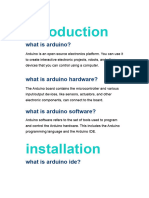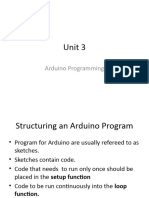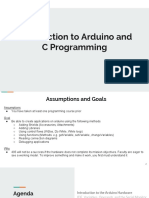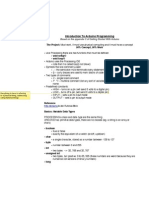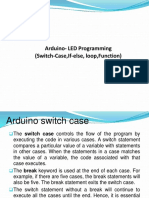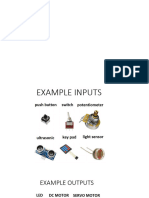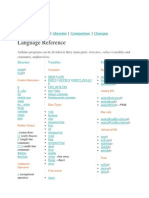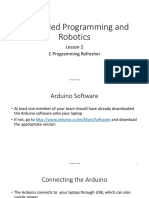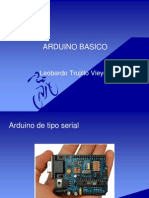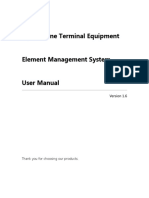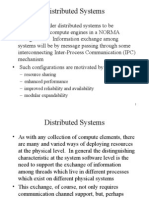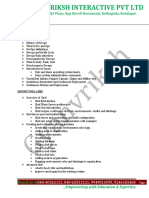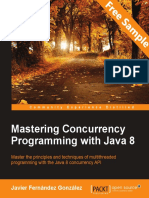0% found this document useful (0 votes)
22 views51 pagesPart3-Programming (2) 2
The document provides an overview of programming with Arduino, focusing on the structure of an Arduino program, including the setup() and loop() functions, variable declaration, data types, operators, control statements, and loops. It also covers digital and analog I/O functions, timer functions, communication functions, and math functions available in the Arduino language. Key concepts include the importance of declaring variables, using control statements for decision-making, and employing loops for repetitive tasks.
Uploaded by
yhkvzjjwd5Copyright
© © All Rights Reserved
We take content rights seriously. If you suspect this is your content, claim it here.
Available Formats
Download as PPTX, PDF, TXT or read online on Scribd
0% found this document useful (0 votes)
22 views51 pagesPart3-Programming (2) 2
The document provides an overview of programming with Arduino, focusing on the structure of an Arduino program, including the setup() and loop() functions, variable declaration, data types, operators, control statements, and loops. It also covers digital and analog I/O functions, timer functions, communication functions, and math functions available in the Arduino language. Key concepts include the importance of declaring variables, using control statements for decision-making, and employing loops for repetitive tasks.
Uploaded by
yhkvzjjwd5Copyright
© © All Rights Reserved
We take content rights seriously. If you suspect this is your content, claim it here.
Available Formats
Download as PPTX, PDF, TXT or read online on Scribd
/ 51

